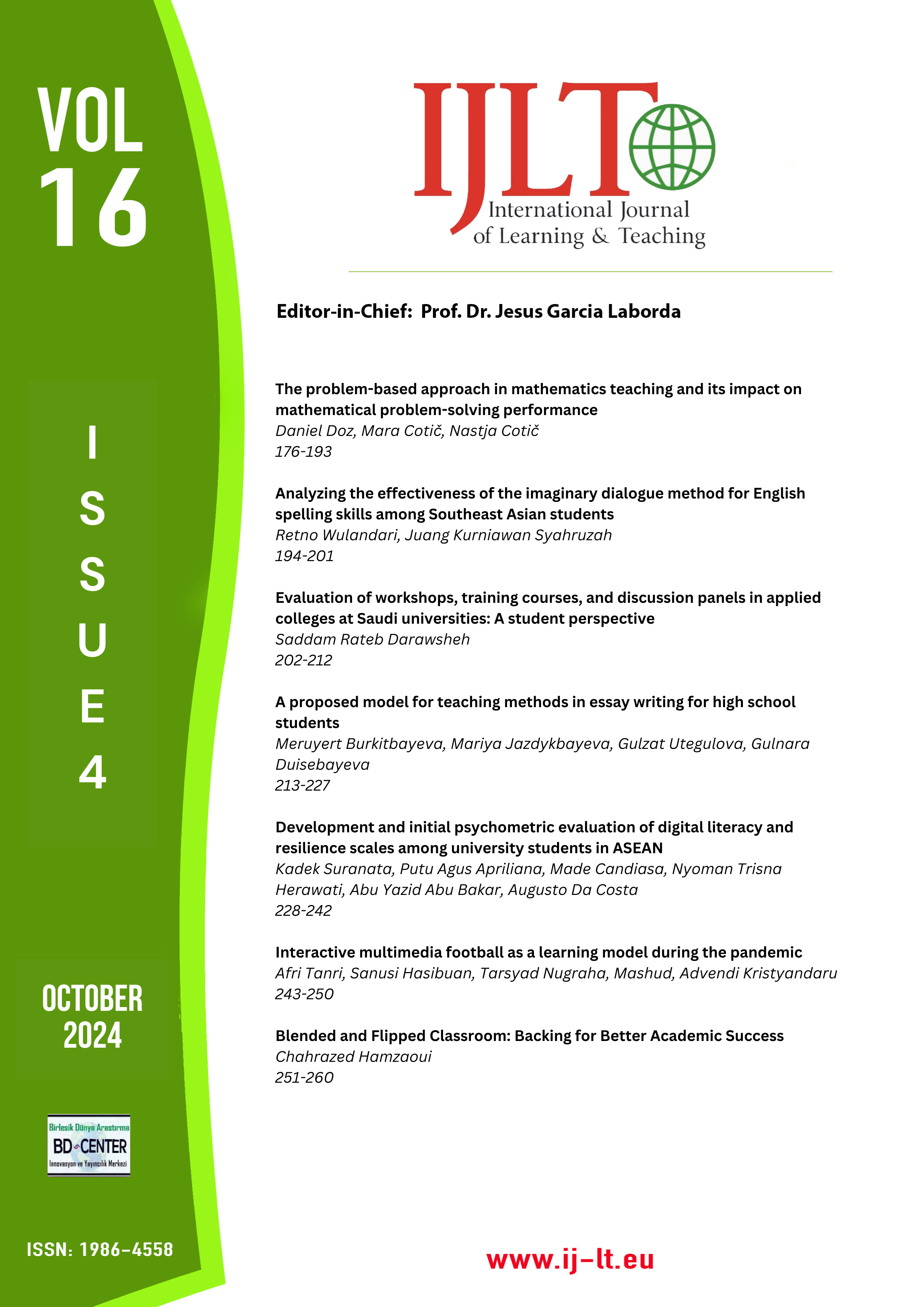Analyzing the effectiveness of the imaginary dialogue method for English spelling skills among Southeast Asian students
Main Article Content
Abstract
This research explores the use of the imaginary dialogue method as an instructional tool to enhance English spelling skills among students, where teachers provide imaginative dialogue prompts on paper with guided instructions. The study aimed to describe students' responses to this method in an English language context. The study used purposive sampling and employed a descriptive qualitative approach. Data were collected through questionnaires, interviews, and documentation, then analyzed using data reduction, data display, and conclusion-drawing techniques. Findings indicate that students responded positively to the imaginary dialogue method as an engaging and effective alternative for learning English speaking skills. Results showed a notable improvement in students’ engagement and mastery of English-speaking skills using the imaginary dialogue method. Additional findings from the questionnaires revealed varying attitudes toward English, with some students showing a strong positive response, while others expressed a more moderate interest. These results suggest that the imaginary dialogue method can be an effective and engaging approach for supporting English language learning among middle school students. These findings suggest that the imaginary dialogue method can be a beneficial supplementary tool for enhancing English language skills among middle school students.
Keywords: Dialogue imaginary method; English skill; spelling; student response.
Downloads
Article Details

This work is licensed under a Creative Commons Attribution-NonCommercial-NoDerivatives 4.0 International License.
Authors who publish with this journal agree to the following terms:
- Authors retain copyright and grant the journal right of first publication with the work simultaneously licensed under a Creative Commons Attribution License that allows others to share the work with an acknowledgement of the work's authorship and initial publication in this journal.
- Authors are able to enter into separate, additional contractual arrangements for the non-exclusive distribution of the journal's published version of the work (e.g., post it to an institutional repository or publish it in a book), with an acknowledgement of its initial publication in this journal.
- Authors are permitted and encouraged to post their work online (e.g., in institutional repositories or on their website) prior to and during the submission process, as it can lead to productive exchanges, as well as earlier and greater citation of published work (SeeThe Effect of Open Access).
